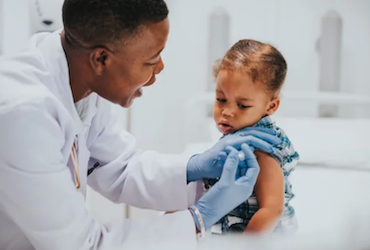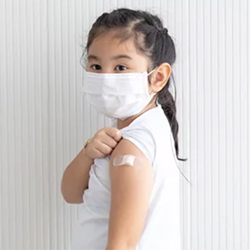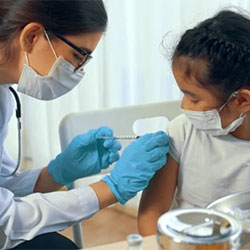By Ethan Covey
COVID-19 vaccination rates among U.S. children under the age of 5 years remain very low, despite many parents’ reported willingness to vaccinate their kids, according to a CDC report.
On June 18, 2022, the CDC recommended COVID-19 vaccination for children who are 6 months to 4 years of age, but as of Nov. 9, only 6% of children younger than the age of 2 years and 9% of children ages 2 through 4 had received at most one dose of a COVID-19 vaccine, according to the report (MMWR Morb Mortal Wkly Rep 2022;71[46]:1479-1484).

The report also highlighted the importance of direct healthcare provider recommendations in convincing parents to vaccinate their young children.
To better understand the reasons for low vaccination rates among children under the age of 5 years, the CDC analyzed data from 4,496 interviews conducted from July 1, 2022 to July 29. The interviews took place as part of the National Immunization Survey Child COVID Module, an ongoing, national random-digit–dialed mobile telephone survey of households that includes children and adolescents (ages 6 months to 17 years).
Responses to the survey were organized into three groups:
- child vaccinated with one dose or less;
- child unvaccinated and parent open to vaccination; and
- child unvaccinated and parent reluctant to vaccinate.
Overall, the researchers found an expectedly higher percentage of vaccinated children (92%) had parents who reported perceiving the COVID-19 vaccine as safe compared with the parents of unvaccinated children (57%).
However, 59% of children were unvaccinated despite their parents being open to vaccination. Thirty-seven percent of children in the surveyed age range were unvaccinated with the parents reporting being reluctant to vaccinate their children.
Parental openness to vaccination was higher among Hispanic (66%), Black (61%) and Asian (83%) children compared with white (53%) children. The researchers noted parental openness to vaccination was also higher among children in urban settings compared with rural.
In addition, parental confidence in COVID-19 vaccine safety and receipt of a provider recommendation for COVID-19 vaccination was higher among vaccinated than unvaccinated children.
Among children who were unvaccinated and had a parent open to vaccination, a higher percentage of children growing up in households with incomes greater than $75,000 per year (70%) had parents who perceived the vaccine as safe than children raised in households below the poverty level (38%).
The study also found that provider recommendations were particularly powerful drivers of vaccination.
Sixty-three percent of vaccinated children had parents who reported having received a provider recommendation compared with 25% of unvaccinated children, and three of four vaccinated children received their COVID-19 vaccine at a medical site (e.g., doctor’s office), underscoring the importance of a provider’s recommendation. This accounted for a larger proportion of younger children receiving vaccinations at medical sites when compared with children between 5 and 17 years, 38% of whom were vaccinated at medical sites and 45% at pharmacies.
“These findings indicate that a large percentage of unvaccinated children had parents who reported being open to vaccination,” Tammy A. Santibanez, PhD, an epidemiologist with Immunization Services at the CDC’s National Center for Immunization and Respiratory Diseases, told Infectious Disease Special Edition. “However, many of these parents had not received a provider recommendation and had concerns about vaccine safety.”
Dr. Santibanez concluded a strong vaccination recommendation from a trusted healthcare provider along with accurate information about the safety of COVID-19 vaccines could increase vaccination coverage among young children.
Dr. Santibanez reported no relevant financial disclosures.




